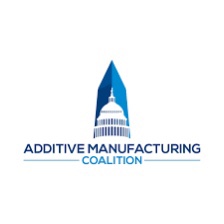Back in February (on the 4th, to be precise), the U.S. House of Representatives passed H.R. 4521, a bill that continues the questionable American tradition of using unwieldy acronyms as names for pieces of legislation. In this case, the bill’s name is the America COMPETES Act: as you surely must’ve guessed, “COMPETES” stands for “Creating Opportunities for Manufacturing, Pre-Eminence and Economic Strength.” The law touches a wide array of regulatory areas, from “financial regulations for cannabis-related businesses” to “requir[ing] the Small Business Administration to issue guidance for childcare operators.” However, the most relevant items in the bill for the 3D printing industry include:
- The provision of “funding for the domestic production of semi-conductors”
- Mention of shoring up “supply chains for critical sectors,”
- The reauthorization, establishment, and modification of “scientific research programs within the Office of Science and Technology Policy, the Department of Energy, and other federal agencies,” and “education and workforce programs with an emphasis on science, technology, engineering, and math.”
Complementing the COMPETES Act was the “United States Innovation and Competition Act of 2021 (USICA)(S. 1260).” Formerly known as the Endless Frontier Act, this legislation sponsored by Senators Chuck Schumer from New York and Todd Young from Indiana entrusts $110 billion for basic and advanced technology research over five years.
Both the America COMPETES and USICA acts are each chamber’s written legislation to compete with China. Furthermore, according to the American Action Forum, the central component in both of them is the Creating Helpful Incentives to Produce Semiconductors Act (CHIPS), a $52 billion subsidy program for private firms that build semiconductor production facilities in the US.
The America COMPETES Act passed through the U.S. Senate on March 24, 2022. Both houses of Congress approved it with strong bipartisan support, and the bill is now in reconciliation. A few days later, on April 1, the Additive Manufacturing (AM) Coalition, a 501(c)(6) (tax-exempt business association) based in Washington, D.C., sent a letter addressed to the bill’s sponsor, Democratic Congresswoman Eddie Bernice Johnson of Texas, as well as Congressman Frank D. Lucas from Oklahoma, the ranking Republican member of the House Committee on Science, Space and Technology.
The crux of the letter, which is signed by the AM Coalition’s Executive Director, L. David Cherington, is stated in the second paragraph, which reads:
“We applaud the House and Senate for continuing to move forward on these efforts to improve U.S. competitiveness and to increase investment in research, development, and workforce training. We especially commend the bipartisan approach to address these critical issues. We ask your support for improvements to two critical areas, workforce development for additive manufacturing and investment in micro and nanoscale 3D printing of electronics.”
Regarding workforce development, the letter argues that the American labor market is “considerably behind” Asia and Europe when it comes to AM. Accordingly, the Coalition advises that the government should prioritize easing the financial burden of investing in AM equipment for all colleges, universities, and general vocational training institutions that offer programs involving AM. The organization also suggests that Congress encourage and facilitate the creation of more AM-related programs at schools across the country.

Image courtesy of AM Coalition
As for micro and nanoscale 3D printing of electronics, the letter notes the severe semi-conductor shortage that started at the beginning of the pandemic––which remains one of the favorite obsessions of global policymakers. Furthermore, the AM Coalition asks Congress “fund not only traditional manufacturing technologies but also the U.S. companies who today can print electric circuits and chips (…).”
Since, as the letter also notes, the companies currently printing electric circuits and chips can’t yet do so “at the scale to solve the current shortage,” the Coalition requests explicitly that Congress set aside “at least 5% of the funding” for domestic production of semi-conductors in the COMPETES Act with the objective of “cutting edge manufacturing technologies, including [AM].”
If legacy electronics giants do indeed end up significantly increasing their adoption of AM, the semi-conductor shortage could turn out to be the singular greatest long-term catalyst driving them in that direction. While 5% may not sound like much, with the bill (in its current form) providing $50 billion in funding for the semi-conductor industry, that would amount to $2.5 billion going to semi-conductor production achieved with advanced manufacturing techniques.
In turn, a sizable chunk of that—probably the majority—would go to the AM sector. This, and the letter as a whole, in my mind, highlights the cognitive dissonance present in all the questions that still pop up along the lines of, “When will AM become a ‘real’ industry?” Regardless of how much of the semi-conductor funding ends up in AM, the answer to that question is that it already is.
The Additive Manufacturing Coalition letter is available here.
Subscribe to Our Email Newsletter
Stay up-to-date on all the latest news from the 3D printing industry and receive information and offers from third party vendors.
You May Also Like
US Army Contracts 3YOURMIND & Phillips Corp. for 3D Printed Tank Parts Identification
The US Army Combat Capabilities Development Command (DEVCOM) Ground Vehicle Systems Center (GVSC) has awarded 3YOURMIND and Phillips Corporation Federal Division a contract to develop part identification solutions for tanks....
Printing Money Episode 18: The DC Fly-In with Mark Burnham, AddMfgCoalition
It’s only been a week since the previous show, but Printing Money is back already with Episode 18. Certain events call for Printing Money’s coverage, and the recent 2nd Annual...
Aerospace OEM Invests $9.1M in Michigan for Metal 3D Printing and More
Barron Industries, a foundry based in Michigan specializing in serving the aerospace and defense sectors, has made a $9.1 million capital investment to expand its operations in Oxford, Michigan. The...
Wisconsin’s Evology Adds Digital Sheet Forming to Service Roster
Evology, a service bureau based in Wisconsin and specializing in serving strategic sectors like aerospace and defense, has added digital sheet forming (DSF) to its repertoire of manufacturing capabilities. Evology...


































